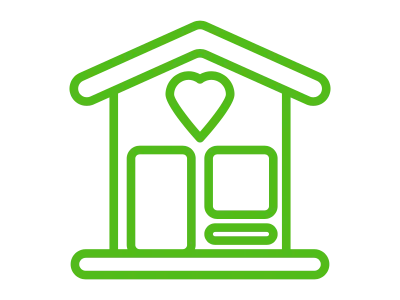Minnesota Healthy Homes Program: Improving your home's health through Energy Efficiency
February 19, 2020

Published February 19, 2020
Your home's indoor environment and air quality can have a big impact on your health. Indoor pollutants like radon, mold, and chemicals from a variety of sources can result in unhealthy levels of pollutant sources if ventilation and moisture are not carefully managed. By adopting energy efficiency measures, you not only help reduce heating and cooling costs but save energy while improving your health and comfort levels. Healthy Homes Minnesota is a program aimed at addressing this connection between energy efficiency and healthy homes.
The Healthy Homes Program
The Healthy Homes Program is an effort by the U.S. Department of Housing and Urban Development (HUD) Office of Healthy Homes and Lead Hazard Control to promote healthier and safer housing across the nation. The Office of Lead Hazard Control and Healthy Homes (OLHCHH) provides funds to state and local governments to develop effective ways to reduce lead-based paint hazards. In addition to these efforts, the office provides public outreach and technical assistance to help protect families from other health and safety hazards in the home including mold, lead, allergens, asthma, carbon monoxide, pesticides and, radon.
Why healthy homes matter
Unhealthy housing impacts health and can be costly. Numerous research studies show that housing-related hazards such as indoor biological contamination (such as the presence of mold, pests, and bacteria), indoor chemical contamination (such as lead, carbon monoxide, and radon) and structural and safety deficiencies (due to inadequate design which can result in injuries and illness) all pose a great threat to human health.
Below are some key principles listed by the Healthy Homes program related to energy efficiency;
- Keep your home well-ventilated. Ventilation is an important way to increase fresh air supply and improve respiratory health. Adequate ventilation can help minimize indoor pollutants, which can also be controlled with air cleaners.
- Keep your home dry. Pests and mold can exacerbate asthma and contribute to other respiratory illnesses and allergies. Take a look at our recommendations for controlling moisture levels in your home.
- Keep it temperature controlled. Keeping your home temperature controlled can help prevent exposure to extreme cold or heat. 68 degrees is the recommended setting when you are home, and you can adjust it down when you are away or while sleeping. However, if 68 is too cold or warm incrementally adjust your thermostat by a degree or two at a time to find the best temperature for your household.